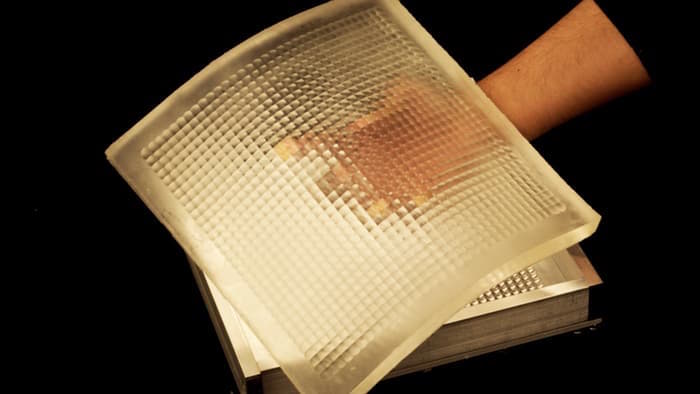Researchers at Columbia University led by an Indian-origin scientist Prof. Shree K Nayar have developed a new flexible sheet camera, that could be wrapped around its subjects to take high-res pictures that otherwise can not be clicked using traditional cameras. The team designed a flexible array of lenses that adapts its optical properties when the sheet camera is bent.
Nayar claims that the present cameras captures the subject mostly from a single point in space. While the camera industry has come a long way in reducing the dimensions of the camera while bettering the image quality, but this team is looking at a very different approach to imaging. With their method, high quality images could be captured over a wide range of sheet deformation.

Nayar believes cameras that are large in format but are thin and flexible have several applications. If such technology could be cheaply manufactured in large numbers, like a roll of plastic or like a sheet of fabric, it could be wrapped around all kinds of things like a piano, street poles, clothing, and even to capture high-quality images with unusual fields of view.
This design could lead to camera the size of a credit-card that the user may simply flex to control his field of view. This new flex-cam needs two technologies – a flexible detector array along with a thin optical system which projects high quality image on the array. An approach would be to mount a rigid lens with fixed focal length to each detector on the flexible array. However in such a scenario, bending the camera would result in ‘gaps’ between the fields of views of adjacent lenses. This may result in the captured image to have missing information or appear ‘aliased’. To fix this issue, the researchers have built an adaptive lens array out of elastic material that enables the focal length of each lens in the sheet camera to change with the local curvature of the sheet in such a way that it lessens aliasing in the captured pictures.
This innate optical adaptation of the lens is passive and avoids use of complex mechanical and electrical mechanisms to independently control each lens placed in the array. The researchers reached at their passively adaptive lens array by optimising its material properties and geometry. They developed their prototype lens array using silicone and exhibited its ability to generate high image quality over a huge range of deformations of the sheet camera. Nayar stated that the lens array they’ve developed is a significant step towards further strengthening the concept of flexible sheet cameras, and make them viable.
Researchers at Columbia University led by an Indian-origin scientist Prof. Shree K Nayar have developed a new flexible sheet camera, that could be wrapped around its subjects to take high-res pictures that otherwise can not be clicked using traditional cameras. The team designed a flexible array of lenses that adapts its optical properties when the sheet camera is bent.
Nayar claims that the present cameras captures the subject mostly from a single point in space. While the camera industry has come a long way in reducing the dimensions of the camera while bettering the image quality, but this team is looking at a very different approach to imaging. With their method, high quality images could be captured over a wide range of sheet deformation.
Nayar believes cameras that are large in format but are thin and flexible have several applications. If such technology could be cheaply manufactured in large numbers, like a roll of plastic or like a sheet of fabric, it could be wrapped around all kinds of things like a piano, street poles, clothing, and even to capture high-quality images with unusual fields of view.
This design could lead to camera the size of a credit-card that the user may simply flex to control his field of view. This new flex-cam needs two technologies – a flexible detector array along with a thin optical system which projects high quality image on the array. An approach would be to mount a rigid lens with fixed focal length to each detector on the flexible array. However in such a scenario, bending the camera would result in ‘gaps’ between the fields of views of adjacent lenses. This may result in the captured image to have missing information or appear ‘aliased’. To fix this issue, the researchers have built an adaptive lens array out of elastic material that enables the focal length of each lens in the sheet camera to change with the local curvature of the sheet in such a way that it lessens aliasing in the captured pictures.
This innate optical adaptation of the lens is passive and avoids use of complex mechanical and electrical mechanisms to independently control each lens placed in the array. The researchers reached at their passively adaptive lens array by optimising its material properties and geometry. They developed their prototype lens array using silicone and exhibited its ability to generate high image quality over a huge range of deformations of the sheet camera. Nayar stated that the lens array they’ve developed is a significant step towards further strengthening the concept of flexible sheet cameras, and make them viable.